Ameritech College Healthcare: Community Assessment Report Part IV
VerifiedAdded on 2022/08/21
|5
|674
|21
Report
AI Summary
This community assessment report, prepared for Ameritech College of Healthcare, focuses on collaboration with community healthcare teams to address the management of chronic conditions among the elderly (aged 65 and above). The report identifies diabetes, chronic heart diseases, respiratory problems, and arthritis as key health risks, supported by evidence of high mortality rates. A community diagnosis highlights the health risks associated with these conditions. The proposed solution involves identifying morbidities and contributing factors to address the root causes of chronic conditions. A lifestyle intervention strategy is recommended, along with a measurable objective to reduce weight in diabetic patients within six months. The report outlines two evaluation strategies and identifies the need for financial, human, and space resources. The conclusion emphasizes the importance of collaboration between patients, community members, and the health team in managing chronic conditions and highlights the challenges and solutions related to resource constraints. References support the findings and recommendations.
1 out of 5
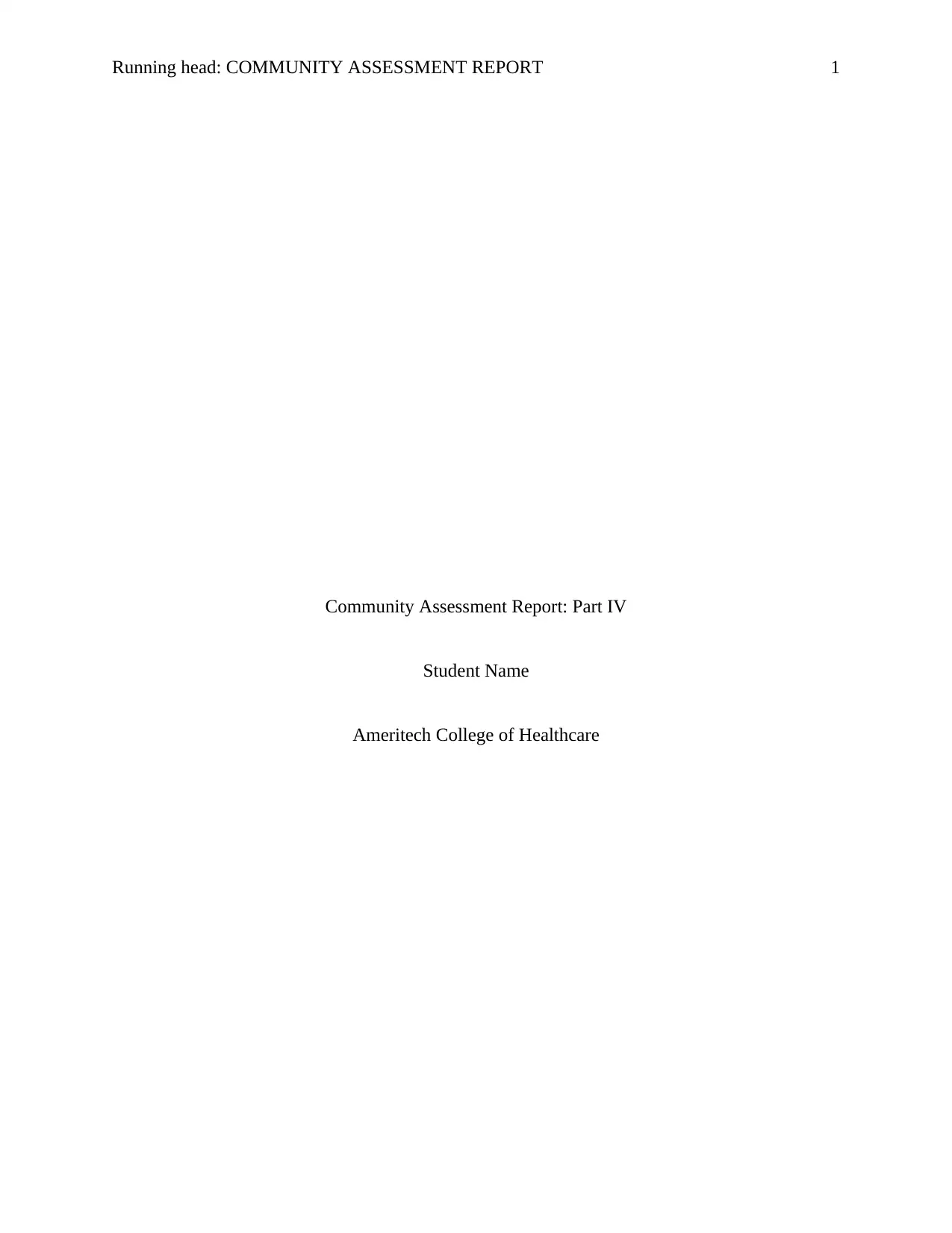
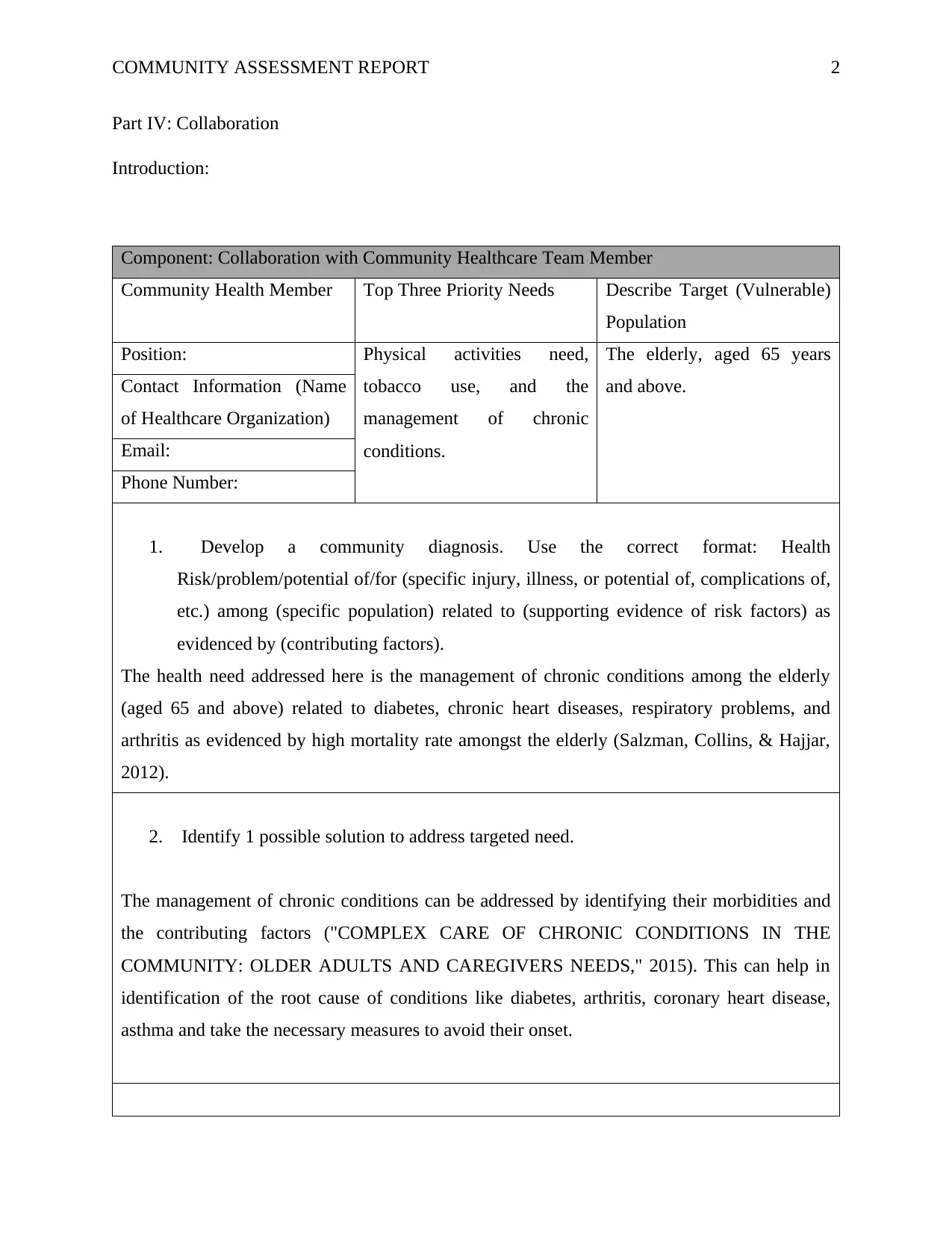
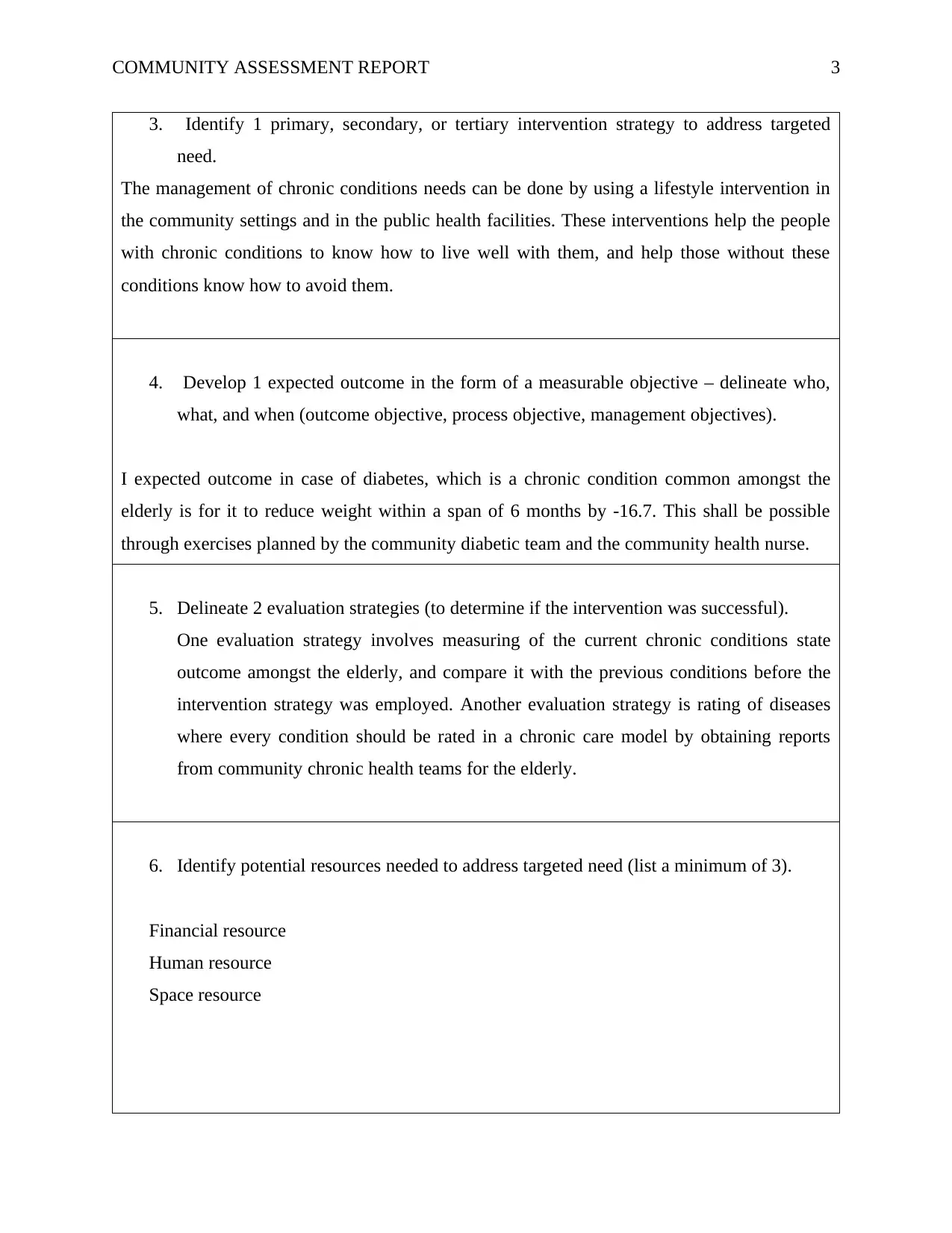

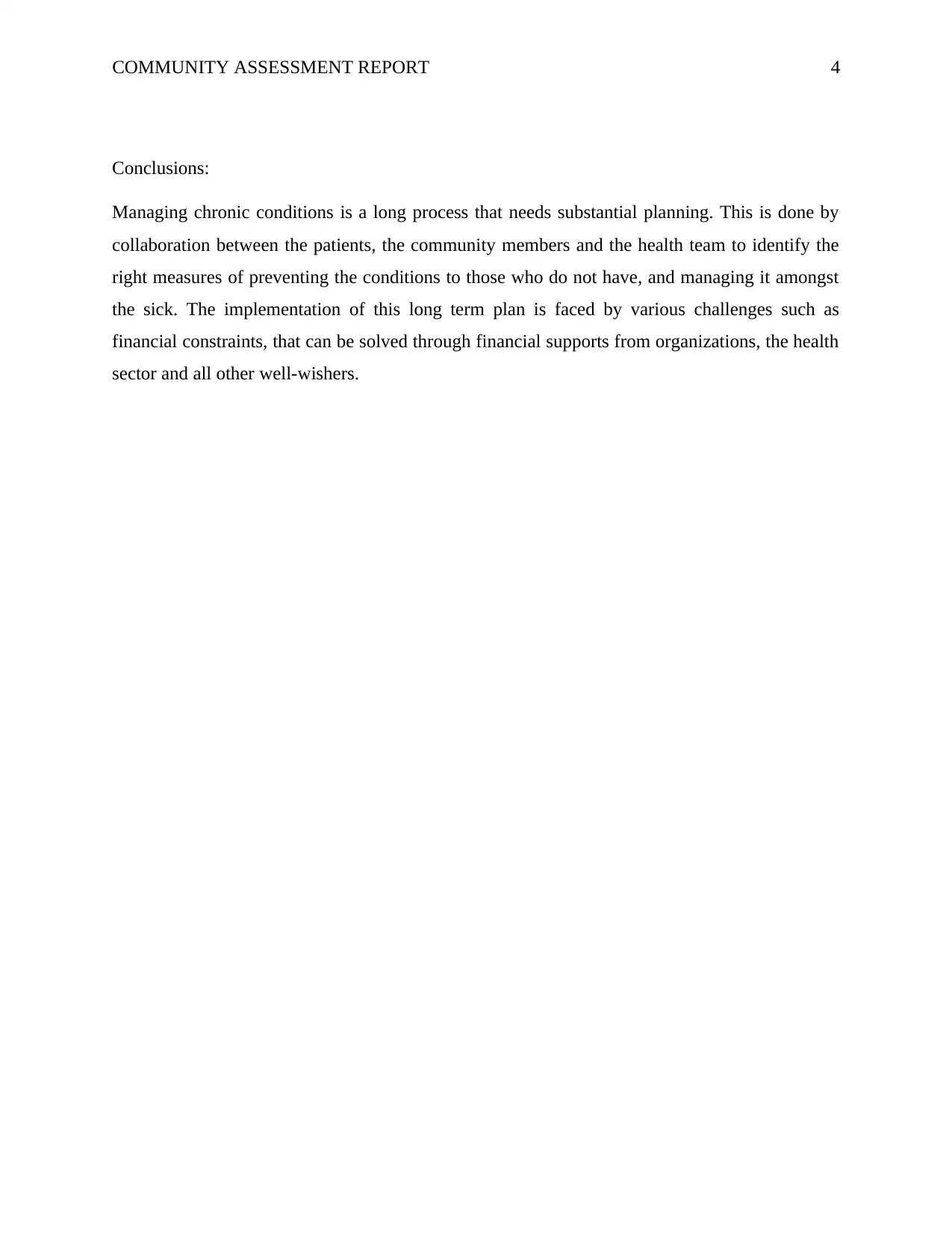
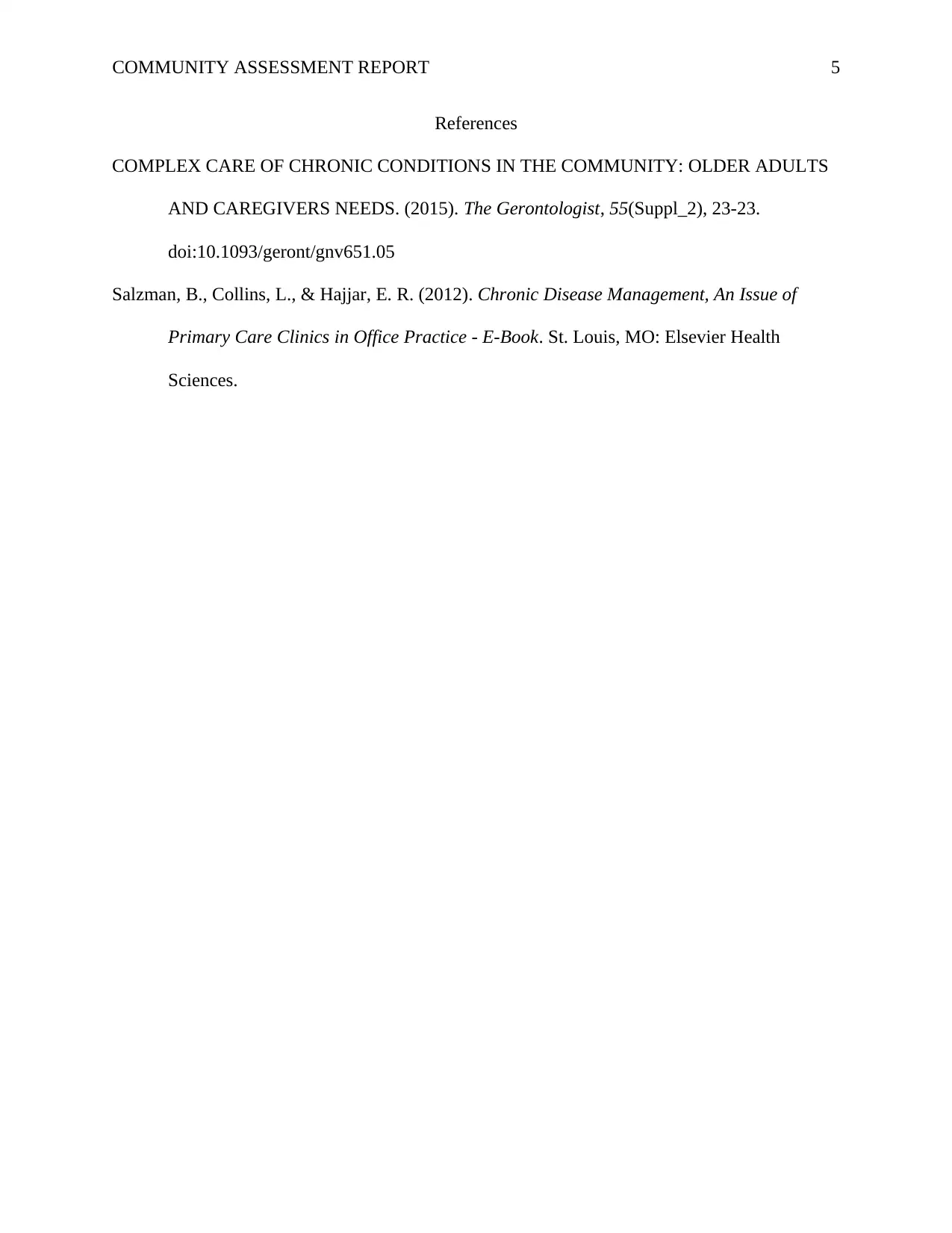






![[object Object]](/_next/static/media/star-bottom.7253800d.svg)